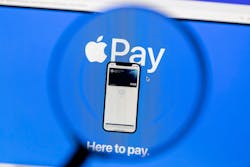The smartphone just can’t stop getting smarter. Ush Shukla, a distinguished engineer at Solace, and a leading enabler of event-driven architecture (EDA) for real-time enterprises, recently sat down with Steve Lasky at SecurityInfoWatch.com to share his insights on how smartphones are set to dramatically change the personalized retail customer experience – and technology is ready to ensure a secure shopping experience, bringing a whole new meaning to retail therapy.
Lasky: Will it ever be possible for stores to accept payments by customers tapping their cards directly onto smartphones without any third-party hardware at all?”
Shukla: The answer is yes. But why are we limiting it to card tapping? Paying on smartphones is already possible today with Google and Apple Pay. We’re already well on the way to eliminating “card tapping.”
It’s now all about going beyond the simple Point-of-Sale (POS) experience. The future of retail will include the whole in-store experience, delivered directly to the shopper’s mobile device. This means that through store technology and analytics, customers will be presented with unique, tailored offers as they browse the store. This will track where customers are within the store, weigh their chosen items if required and automatically put the products in their cart.
The smartphone in the hand of the buyer is that person’s identity, who will be able to browse, picture, compare and buy items in-store without ever going to a POS desk.
Lasky: What are the benefits of real-time offers?
Shukla: For retailers, it’s huge. Customers are far more likely to partake in product offers as they browse an aisle, rather than waiting until they reach the checkout. Coupons can be continuously included to save time at the checkout, and customer loyalty can be rewarded.
Taking this a step further, there is also the potential for fully connected, personalized pricing. Some retailers are starting to offer a two-step process of “member discounts” on specific items that are then linked to benefits inside their supermarket app.However, fully digital price tags could consider events being generated across a product’s supply chain, such as cost price, availability, etc., combined with customer data and behavior to deliver personalized in-store prices or offers in real time to individual consumers.
Lasky: Security is at the forefront – do we have the technology to ensure safe shopping?
Shukla: Of course, implementing a whole in-store experience is a large task – it’s a challenge that we have already come across here at Solace. The relevant store app will need access to customers' phones, location, and data, which naturally presents security issues.
Nearly nine in 10 consumers in the U.S. now use some form of digital payment, so security is of utmost importance. Today’s financial institutions face growing challenges around payment fraud at the consumer end, a threat that organizations must tackle without causing disruption or worry to consumers. The consequences of payment fraud can be catastrophic for the organization’s bottom line, and for the trust their consumers have in them to prevent fraudulent activity.
While many organizations use payment “tokenization,” where sensitive information is replaced with non-sensitive information to prevent payment fraud, cyber-attacks, or data breaches and more – and underlying event mesh can take this further. Here event-driven architecture (EDA) and ML/AI technology can help companies mitigate security risks. EDA enables detection and identification of fraudulent transactions in real-time, with a unified approach that uses AI and ML models across all channels, including mobile-based payments. By thinking in an event-driven way, financial institutions can flag and act against suspicious activity, and flexibility – always keeping consumers protected and organizations ahead of the curve.
Lasky: What infrastructure is required for retailers to make customer smartphones a central part of in-store experiences?
Shukla: Deploying this at scale, while keeping security front and center is precisely where middleware technology and an event mesh can help! Retailers can create an event mesh by deploying and connecting event brokers, it’s a modern form of messaging middleware! An event mesh is an architectural layer that allows events from one application to be dynamically routed and received by any other application, no matter where these applications are deployed.
An event mesh connects and enables real-time communication between back-end systems running inventory, product catalog, pricing and so on with front-end systems that would include in-store POS systems, providing a single solution for operational efficiency and an enhanced customer experience.
The benefits are huge. Using an event mesh, a retailer can feed back user data to a core processor to optimize real-time shopping and loyalty ensuring an enhanced experience for both the customer and in-store staff.
About our guest expert: Ush Shukla is a distinguished engineer at Solace. As an Enterprise Integration Architect, Ush has more than 13 years of experience leading diverse teams in the implementation of large-scale middleware solutions across varied business domains.
About the Author
Steve Lasky
Editorial Director, Editor-in-Chief/Security Technology Executive
Steve Lasky is Editorial Director of the Endeavor Business Media Security Group, which includes SecurityInfoWatch.com, as well as Security Business, Security Technology Executive, and Locksmith Ledger magazines. He is also the host of the SecurityDNA podcast series. Reach him at [email protected].


